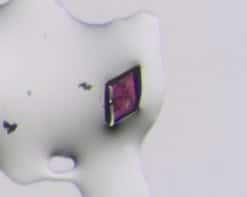Sometime early in the next century the miniaturization of conventional electronic devices will grind to a halt. The inexorable progress that has seen the number of transistors on a single silicon chip increase by a factor of 16 000 over the past 24 years cannot continue indefinitely. A combination of reasons – cost, technology and fundamental physics – will be responsible for the eventual breakdown of Moore’s law, the rule-of-thumb that has guided the semiconductor industry through impressive decades of exponential growth. These problems will really kick in when the key dimensions of devices are measured in nanometres.
New materials and fabrication techniques will be essential in the electronics industry. Devices based on organic molecules and carbon nanotubes are one possibility currently being investigated in research labs around the world. In this month’s Physics World magazine James Gimzewski how
As the minimum feature size in devices gets smaller, quantum effects will become more important. At first these effects will be a problem. Electrons will, for example, tunnel through thin insulating layers against the wishes of chip designers, but in accordance with the laws of quantum mechanics. Transistors will contain fewer and fewer electrons as they get smaller, and thermal fluctuations will blur the distinction between “on” and “off” states.
But quantum phenomena also have the potential to improve the performance of a range of electronic, optical, magnetic and chemical devices. The challenge will be to make huge quantities of nanoscale structures with extremely uniform and controlled sizes, shapes and compositions. Moreover, the number and location of individual dopants and defects in these devices will have to be controlled with single-atom resolution.
Before then, however, there is still a great deal to learn about the quantum behaviour of electrons in semiconductors. In the magazine, Leo Kouwenhoven and Charles Marcus describe how experiments on ”
Although this all sounds very futuristic, nanotechnology – defined as any product that uses a material in which one dimension is measured in nanometres – is already big business (see, for example, the WTEC Study). Applications range from magnetic read-heads through coatings to sensors and drug-delivery systems. The market for optical coatings alone is worth billions of dollars. Proof indeed that in nanotechnology the rewards, like the challenges, are enormous.
From Bernoulli to Bergkamp
Apologies to readers who had hoped that Physics World might offer a small football-free haven from the World Cup finals, which start in France later this month, or to those who do not enjoy classical mechanics and hydrodynamics – the article on “
In Argentina, according to Football Against the Enemy (1996 Phoenix), “football [and politics] is a respected academic field, almost like particle physics”. For this month Physics World has to agree.



